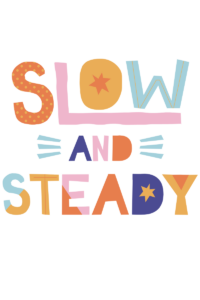There’s a saying, “out of rest comes the appropriate action.” The reason for that is it gives us time to think; we have time to recalibrate. I don’t want to make light of this pandemic going on. I understand for many of us, including myself, it is terrifying. It is very real that some of us are losing loved ones. So please know that I have not lost sight of that.
However, I have spent a lot of time reflecting, and I guess recalibrating. I believe that there is an opportunity in this crisis. I’m sure many of us can admit that we have just been going through the motions in our career. Whatever mandate comes down, we comply. Things are just added continuously to our plate. At times we even follow unnecessary mandates.
Some great conversations are finally happening about education. Well, let’s get real there are some crappy conversations too. For now, I just want to focus on the ones that can move us forward.)
Here are the discussions I’ve been hearing, and this includes people outside the education system. People are talking about:
- The importance of social-emotional learning
- Family involvement
- What happens when you remove grades or state tests.
- The equity gaps that exist, meaning students who have access to high-quality education and those that don’t.
I think more and more people are noticing that content is only ONE piece of the educational puzzle.
So I’ve been thinking about how we can use this awareness to help make a positive change in our education system. What can we get in place before heading back to school next fall? I really think this is our moment to redesign our schools. Yeah, I know it seems far fetched. You’re probably reading this and thinking, “Girl, I’m just trying to get this digital learning going next week. I don’t have time to think about change.” Or, like many educators, you may be thinking, “I’m not in a position to make change, that’s really for the higher-ups.” Here’s where you’re wrong. I personally believe we have been socially conditioned to believe that we don’t hold power as educators. But in actuality, we do. We are not powerless in all this. We give up our power the moment we say things like, “well, it’s always been that way.” It doesn’t have to be.
In my little friend group, I’m often called the disrupter. Haha, not the most flattering name, and it definitely doesn’t go along with being Zen. But the reason for it is because I believe that we have the right to speak up and push back on the system. And I advocate for that. Don’t get me wrong I don’t push back on everything. I mean, I’m not starting a rally for us to be able to wear leggings every day to work because so many of us haven’t been wearing pants lately. But I do push back on the structures that are outdated and harm our students because they’re top priority, not our insecurities or egos.
Listen, life will eventually resume. This whole virus will be a thing of the past. Whole knows when that will be, but it will be. I want us to start thinking about the action we’ll take when this all blows over? Let’s not live through this whole experience and not learn about what’s important.
This might be the best opportunity in our lifetime to change education priorities, instead of just going through the motions. Push back and advocate for what we know to be what’s best for kids. Maybe it’s as simple as spending less time on an ELA lesson in order to do a quick check-in to see how the students weekend went. Or perhaps it’s something more substantial like grading policies. No matter the range, challenge it, question it, get the conversation going, build off the freaking momentum. We finally have people outside of our community that have our backs. Use it!
The worst that could happen is that nothing comes from it, and everything goes back to the status quo, but at least we could say we tried. Come on, who wants to see that? No one! So rise up! We are not powerless in all this!
Want to check out more?
MEMBERSHIP SITE:
https://zennedmath.com/online-courses/
FACEBOOK GROUP: Zenned Math Teachers
https://www.facebook.com/groups/zennedmathteachers/
YOUTUBE CHANNEL: Zenned Math
https://www.youtube.com/channel/UC5njH_5LoK6G67BvZecGfnw?
WANT ME IN YOUR INBOX? Sign up for my newsletter
https://view.flodesk.com/pages/5efc876dcaabca0028b95eb5
DISCLAIMER: Some links included in this blog might be affiliate links. If you purchase a product or service with the links that I provide, I may receive a small commission. There is no additional charge to you!

